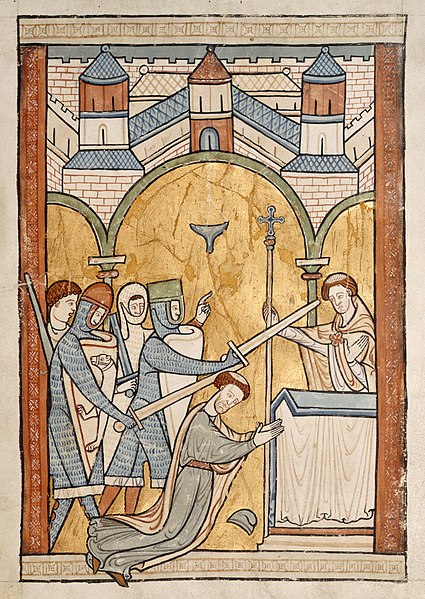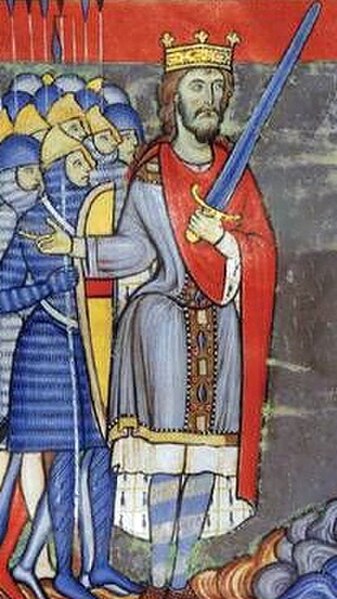The term Angevin Empire describes the possessions held by the House of Plantagenet during the 12th and 13th centuries, when they ruled over an area covering roughly all of present-day England, half of France, and parts of Ireland and Wales, and had further influence over much of the remaining British Isles. It may be described as an early example of a composite monarchy. The empire was established by Henry II of England, who succeeded his father Geoffrey as Duke of Normandy and Count of Anjou. Henry married Eleanor of Aquitaine in 1152, acquiring the Duchy of Aquitaine, and inherited his mother Empress Matilda's claim to the English throne, succeeding his rival Stephen in 1154. Although their title of highest rank came from the Kingdom of England, the Plantagenets held court primarily on the continent at Angers in Anjou, and at Chinon in Touraine.
12th-century depiction of Henry and Eleanor of Aquitaine holding court
King John's Castle, on the river Shannon
Carcassonne
Earliest known portrayal of Thomas Becket's murder in Canterbury Cathedral, where he was archbishop.
The House of Plantagenet was a royal house which originated in the French County of Anjou. The name Plantagenet is used by modern historians to identify four distinct royal houses: the Angevins, who were also counts of Anjou; the main line of the Plantagenets following the loss of Anjou; and the Houses of Lancaster and York, two of the Plantagenets cadet branches. The family held the English throne from 1154, with the accession of Henry II, until 1485, when Richard III died.
Henry II (1154–1189) is considered by some to be the first Plantagenet king of England, and the first Angevin.
A 13th-century depiction of Henry II and his legitimate children: William, Henry, Richard, Matilda, Geoffrey, Eleanor, Joan and John
A miniature from an English psalter presenting a spirited account of the murder of Archbishop Thomas Becket, c. 1250. Walters Art Museum, Baltimore
Richard I's Great Seal of 1189, the History Museum of Vendée








